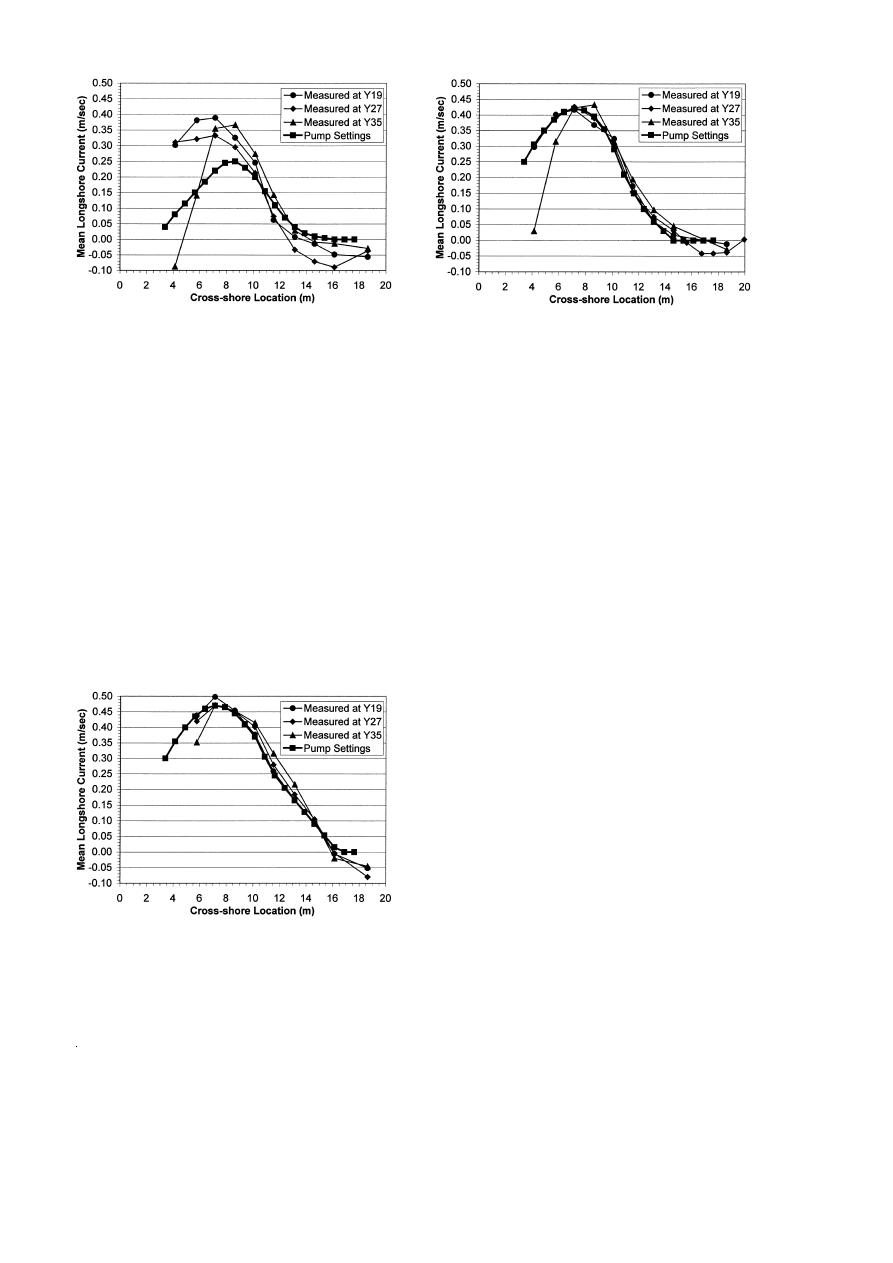
D.G. Hamilton, B.A. Ebersole r Coastal Engineering 42 (2001) 199218
207
Fig. 4. Test 6D: under pumping at lateral boundaries.
Fig. 6. Test 6N: proper pumping at lateral boundaries.
fifteenth and final iteration. Peak currents at the three
relative to other tests, and Fig. 5 shows longshore
primary transects were relatively uniform, and the
current results from the test. In the surf zone, the
degree of uniformity along much of the beach in-
measured current distribution matched the pump set-
creased noticeably. In the offshore tail, agreement
tings quite well. In this region, it would be difficult
between pump settings and measurements was the
to discern whether or not the lateral boundaries were
best observed in any prior experiment. Current mea-
being over-pumped. However, the over-pumped case
surements in the offshore tail were always slightly
ZTest 6J. produced substantially more recirculation
greater than the pump settings, due to the internal
in the offshore region, relative to Test 6I. The results
recirculation. The magnitude and extent of the small
from this experiment indicated that there are signs of
flow reversal region near the shoreline at the up-
over pumping, but the results are subtle and not
stream end of the beach was significantly less, and
obvious over much of the longshore current distribu-
the longshore current measured closest to the shore-
tion, except in the offshore tail.
line at Y35 was now directed downstream Zpositive
The last few experiments Z6K through 6N. fo-
values.. However, the flow reversal near the shore-
cused in more detail on the offshore tail of the
line was still present further upstream. The flow
distribution, which proved to be more difficult to
reversal seemed to cause the higher current magni-
tune. Fig. 6 shows the results from Test 6N, the
tude measured immediately offshore of the peak at
Y35. The internal recirculation, Qr was the lowest
that had been observed during all previous tests,
based on the measurements at the ADV furthest
offshore. Therefore, it was concluded that the pump
settings used during Test 6N were the proper set-
tings, and they produced the highest degree of uni-
formity of longshore currents in the surf zone. Addi-
tional measurements were made offshore at the Y27
transect, to more accurately quantify the magnitude
of the internal recirculation in the offshore region.
They are discussed in more detail in the next section.
The same iterative process used for the regular
wave case was repeated for the irregular wave case.
The final longshore current distribution was achieved
in Test 8E, after five iterations. A more complete set
Fig. 5. Test 6J: over pumping at lateral boundaries.



 Previous Page
Previous Page
